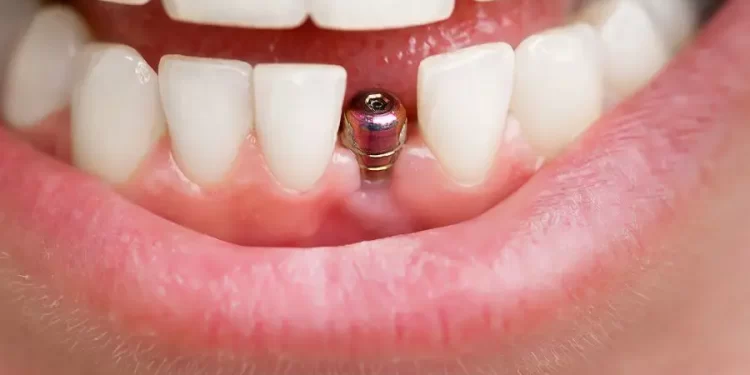Various advancements have happened in the dental health field. For instance, you can now get dental implants. Dental implants are a type of prosthetic device used to replace missing teeth. They're surgically placed in the jawbone and act as an artificial root for a replacement tooth. There are three main types of dental implants—endosteal (directly placed into the jawbone), subperiosteal (placed on top of the jawbone), and transosteal (placed through the jawbone).
Besides teeth replacement, there are other reasons why you may want to get dental implants. You could want to improve your speech and chew, enhance confidence, and for cosmetic purposes to enhance your looks and smile. Whatever your reasons, you want to use the service of an expert dentist. Their treatment techniques are minimally invasive and they’re customized to meet your needs and serve you for long.
Whether you’re looking for the best cosmetic dentistry Melbourne or in other states, this article would discuss what to expect from the procedure. Keep reading to learn more.
Expectations You Can Have When Getting Dental Implants
Here are some of the things to expect when you decide to have dental implants:
1. Comprehensive Examination
The first thing you can expect when you visit a dentist for dental implants is a comprehensive examination. This includes a thorough review of your medical and dental history, a physical examination of your mouth and jaw, and a series of diagnostic tests.
First, your dentist will review your medical and dental history, including any medications you're taking, any previous dental work you've had, and any medical conditions that could affect the success of your implant treatment. That’ll help your dentist determine if you're a good candidate for dental implants.
Next, your dentist will physically examine your mouth and jaw. This step includes checking the size and shape of your jaw, the amount of bone available for implant placement, and the placement of your remaining teeth. Doing so will help your dentists get a more accurate picture of your oral anatomy.
Finally, your dentist may recommend additional diagnostic tests such as a CT scan or panoramic x-ray. These tests will help your dentist determine the best placement for the implant and ensure that the implant will be secure and stable in your jawbone. The dentist may also recommend a bone graft before implant placement if there isn't enough bone available for the implant to be securely placed.
Once your comprehensive examination is complete, your dentist can provide you with a detailed plan for implant placement. That’ll include the number of implants needed and the timeline for the procedure.
2. Implant Placement Surgery
After establishing that you're a good candidate for dental implants, the next thing to expect is the actual implant placement surgery. During the surgery, your dentist will make a small incision in your gums to expose the jawbone. Next, they'll prepare the jawbone by drilling a hole into it and inserting the implant. The implant is then secured into the jawbone using tools such as screws.
When the implant is secured in your jawbone, your body begins the process of osseointegration. Your jawbone responds to the implant by forming a layer of new bone around and into the implant. This new bone, known as the osseointegrated layer, securely anchors the implant in your jawbone and allows it to function as a standard tooth root.
The osseointegration process typically takes several months. During this time, the implant and jawbone need to be protected from extreme forces or trauma that could damage the implant or impede osseointegration. Once the process is complete, the implant will be securely in place and it can then be used to support a dental crown, bridge, or denture.
3. Abutment Attachment
Abutment attachment is another essential step to expect when getting dental implants. It involves attaching a metal post (the abutment) to the top of your dental implant. This post supports the new crown, bridge, denture, or other prosthetic devices used to restore your smile. The abutment is usually made of titanium and is designed to match the shape and size of your implant so it fits securely.
The abutment is attached to the implant in a process called abutment attachment. First, the implant is prepared for attachment by cleaning and roughening the surface. This process creates a better grip for the abutment. Then, the abutment is placed on top of the implant and secured with a special screw. This screw needs to be tightened enough to ensure that the abutment is securely attached to the implant.
Once the abutment is securely attached, a mold is taken off the abutment and the surrounding teeth. This mold creates a prosthetic device (such as a crown, bridge, or denture) that’ll fit securely over the abutment and blend in with the surrounding teeth. After the prosthetic device is created, it's secured to the abutment with a unique adhesive.
Without proper abutment attachment, the implant and prosthetic device may not fit correctly and could cause further damage to the surrounding teeth.
4. Crown Placement
Crown placement is the final step in the process of getting dental implants. It involves placing a custom-made replacement tooth or teeth onto the implant post-surgically placed in the jawbone. The dental crown is designed to look and feel like a natural tooth and is made from high-quality materials such as porcelain and zirconia.
The first activity done in crown placement is taking an impression of the implant post. This impression is sent to a dental laboratory where the crown is fabricated. The crown is then adjusted to fit the implant post perfectly. Sometimes, a metal frame may be used to hold the crown.
After that, the dentist attaches the crown to the implant post, and it’s bounded by a special dental cement. The crown is then polished and adjusted to look and function like a natural tooth. Finally, the crown is checked for accuracy and fit. If the crown fits properly, it’s ready to be used. The entire crown placement process can take several weeks, depending on the case's complexity.
With the above four steps in mind, you can start your dental implant journey well-informed and reduce the element of surprise.
Wrapping It Up
Gone are the days when you could have less confidence because of issues such as missing teeth. That's because you can now have dental implants. Apart from restoring your confidence, dental implants serve other purposes such as improving speech and chewing properly. As a first-timer, you may be unaware of what to expect when getting dental implants. This post talks about the steps you can expect to undergo when getting dental implants. You can use it to prepare yourself mentally before beginning the process. And when you're ready to replace those missing teeth, you can check out dental implants in Chesapeake to get started .

























